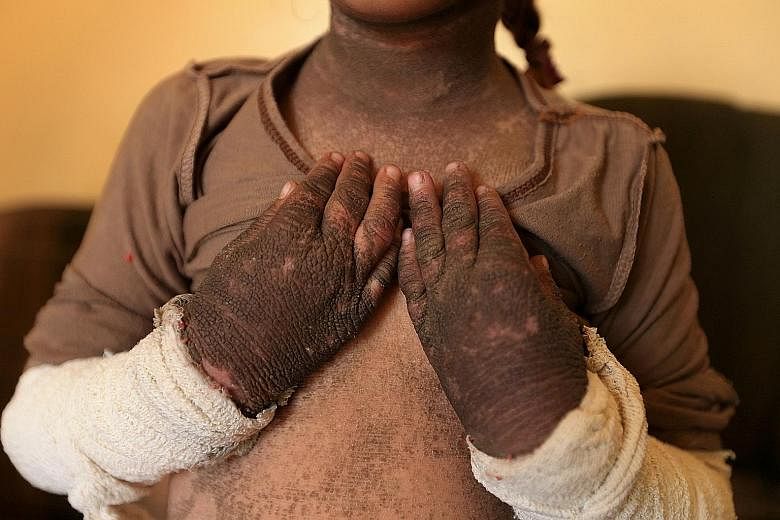QAYYARA (Iraq) • The skin on five-year-old Doaa's neck, arms and leg is blackened and hard even weeks after the attack. Still in severe pain, she tries not to touch anything or move too much.
She was playing in the courtyard when a rocket fired by the Islamic State in Iraq and Syria (ISIS) landed and exploded in a neighbour's garden, emitting a toxic gas, said her father Abdallah Sultan and other residents.
Around a month after the blast, a strong burning smell still stings the nose. The wall next door is black and all the plants in a small vegetable patch have died. Part of the rocket, which residents avoid touching, is still on the ground. The rest has been removed by rescue workers.
"We don't know what the substance in the warhead was. All we know is that it made Doaa break out in blisters all over her body, and she's not got better," said her 33-year-old father.
She was a victim of what appears to have been the fourth chemical weapons attack launched by ISIS during the past two months against civilians in the town of Qayyara in northern Iraq. So far, rights workers have documented at least three other such attacks.
The United Nations says ISIS is stockpiling ammonia and sulphur in civilian areas. It fears the group plans to carry out more chemical attacks as Iraqi forces, backed by American air power, battle the militants in a bid to drive them out of Mosul, their last major stronghold in Iraq.
Qayyara, some 50km south of Mosul, was recaptured from ISIS in August, but the militants were still in the area until last month.
Around the corner from where Doaa was hit, another chemical warhead landed inside a home in September, burrowing into the lawn.
The victims and witnesses said the substance used in that attack and all the others was mustard gas.
Mr Sirhan Awwad, in his 20s, was injured while trying to help remove the rocket. He had to go to Baghdad for treatment because staff at the local clinic said they could not treat that type of burn.
"I went to bed that night and a few hours later my arms went red. The next day, I started to get blisters," he said at the site where the rocket landed. He was wearing a surgical mask, and his arms were still covered in blisters.
His brother filmed the immediate aftermath. Footage on his laptop showed the tail of the rocket protruding from the earth and a pool of water from a damaged underground pipe. The water had turned yellow and was bubbling.
Mr Sultan's cousin Omar Khalifa called the ISIS chemical attacks "not normal". But for people in Qayyara, it is no longer clear what normal is.
REUTERS

